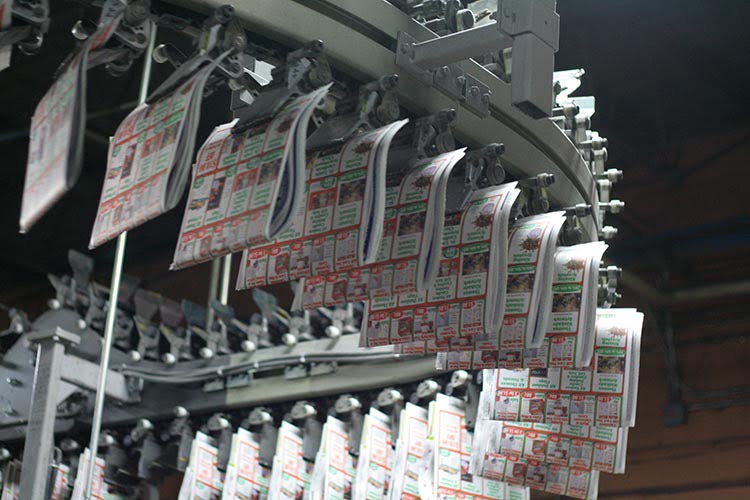Transparency In Environmental Printing
Published:
Author:
Aurora Tejeida
Type:
Blog article
Published:
Author: Aurora Tejeida
- Type: Blog article
 By Neva Murtha & Marcus Ginder
By Neva Murtha & Marcus GinderThis article was originally published by Print Action Magazine.
Sustainability reporting for a growing number of companies has become an integral part of building brand value and communicating to customers. It is an important way for all of us to assess a corporation’s commitment to social and environmental issues and help us make choices that match our own values.
Canopy, an environmental not-for-profit organization based out of Vancouver, has now collaborated with more than 750 companies involved with the printing supply chain. During our discussions, primarily working with these firms to establish environmentally sound purchasing and business policies, their committees always express a desire – and ever more regularly an RFQ requirement – to source forest fibre from non-controversial sources. Our corporate partners prefer that their printed products be produced on recycled and FSC paper and, importantly, that their printer has a finger on the pulse of sustainability issues.
This growing business need for environmentally responsible sourcing of print, however, is still far out of equilibrium because too many printers do not publicly report on sustainability indicators. Readily available, transparent information is crucial to any buyer in today’s market place, regardless of the product or service they are searching for. When an aware consumer is shopping for a can of soup, they look to the label for information on additives, nutrition content and other relevant facts. If there is none, that can goes back on the shelf in favour of a product that readily displays the needed information.
The ingredient list on a can of soup, of course, is not quite the same as a sustainability report for a major printer. These reports, often referred to as Corporate Sustainability Reports (CSRs), are macro versions of a product ingredient list, reflecting a printer’s philosophy, goals, objectives and honest tracking of efforts to achieve those outcomes. What a company chooses to publically report on – or not report on – is now an immediate reflection of the depth of their commitment to sustainability.
As Canopy works with our corporate partners to help them realize their vision of sustainability, we are witnessing a growing frustration with the lack of transparency around critical issues. Supply chain analysis becomes impossible when the ingredients of products or the sustainability vision, goals and achievements are not disclosed. Unanswered questions plague consumers, whether shopping for soup or for printers to produce their catalogue or annual report. Non-disclosure by suppliers, or worse yet the disclosure of anecdotal efforts, broad generalizations and aspirational goals with no tracking of actual outcomes leads to a buyer-beware situation that stymies customers’ efforts to realize their sustainability objectives.
Given that up to 80 percent of a printers’ carbon footprint is attributable to the papers they use, Canopy recommends that companies require their printers and paper suppliers to report transparently on the following key indicators:
• Pre and post-consumer recycled content;
• Use of non-wood and straw content in papers;
• Virgin wood fibre from non-controversial forest regions that are FSC certified;
• Engagement on meaningful conservation initiatives that help advance the
protection of endangered forests;
• Support for the commercial scale development of sustainable paper alternatives
such as papers with high recycled content, straw fibre or FSC virgin fibre content.
When businesses and consumers are faced with a lack of information, they often adopt the precautionary principle even when caution might not be necessary if there was more robust disclosure. Consequently, a printer’s lack of transparency on the key indicators noted above may lead to lost business. Often a printing company will not even be aware of losing this business, because in today’s market, consumers are having initial one-way conversations with a product supplier’s Website.
Online or offline claims by printers that are not readily available, verifiable and focused on these performance indicators, mean customers with credible sustainability targets risk building their efforts on a shaky foundation. Extending transparency across all sustainability reporting platforms has become an essential customer service for companies like Levi's, Disney, BestBuy and Staples who are generally unwilling to risk their carefully built brand equity without concrete assurances.
We do hear concerns that by publishing goals, targets and progress on sustainability objectives a company might expose itself to criticism. For Canopy and many of our partner brands, however, public reporting of sustainability efforts is the first indicator of corporate integrity, especially around environmental and forest conservation issues. Even criticism provides an opportunity to learn where improvement is needed and what customers feel is important.
Companies have a responsibility to their customers to be open and honest on issues of sustainability. In return, choosing transparency can help build a strong relationship with clients, enhance a brand’s goodwill and create a value proposition that distinguishes a company from its competitors.
Most of all, transparency helps reduce risk for business, for customers and for the ecosystems that sustain us all.












